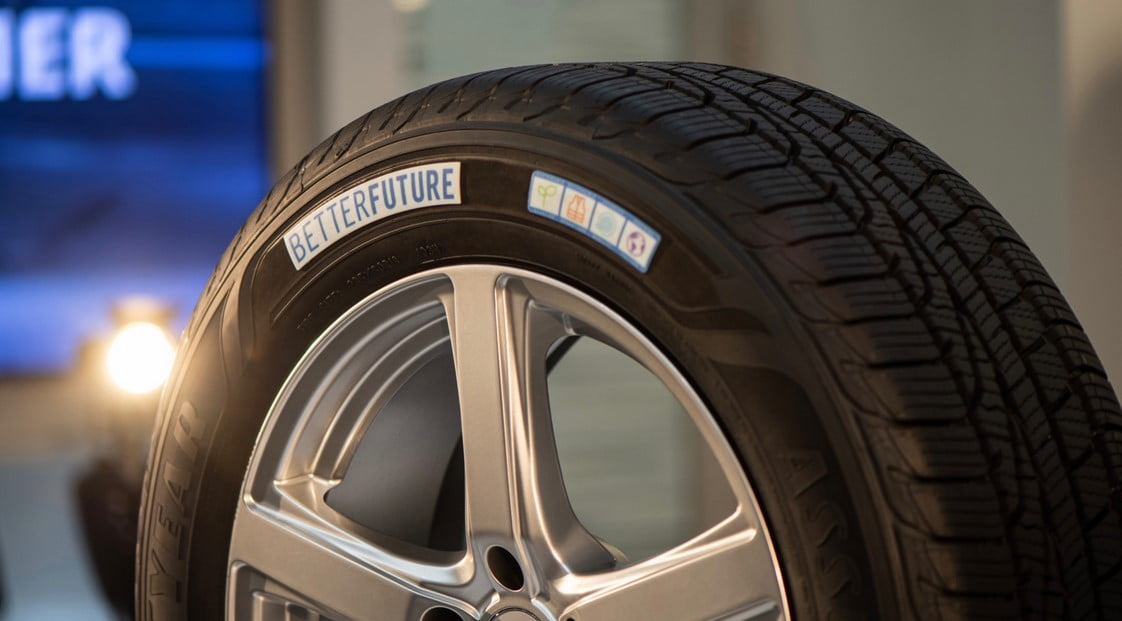
Goodyear unveiled on Wednesday a tire made from 70% sustainable materials, marking a step toward the company’s goal of producing a tire with 100% sustainable materials by 2030.
While this tire is not ready for production (Goodyear calls it a “demonstration tire”), it does showcase some of the materials Goodyear is researching to reduce the use of petroleum as well as emissions from the production process.
The tire includes 13 sustainable materials, including soybean oil, rice husk ash silica, biologically based polymers, fabrics made from recycled plastic bottles, and renewable resins, in nine tire components, according to a Goodyear press release.
Some of the carbon blacks used in the tire were also not manufactured from burned oil, the traditional production process that generates more pollution. The tire includes three carbon blacks produced from carbon dioxide, vegetable oil, and methane. These are more sustainable processes, according to Goodyear. The company also notes that methane could be replaced with “renewable natural gas” to further reduce emissions.
Goodyear also recently announced that it will collaborate with the chemical company Monolith on sustainable carbon black production. The Department of Energy approved a $1.04 billion loan to Monolith for that technology, which begins with natural gas and splits it into hydrogen gas, potentially for use by fuel cell vehicles, and carbon black.
Tire manufacturers have been experimenting with sustainable materials for some time. In 2009, Yokohama announced a tire made with orange peels as a way to reduce petroleum use. A decade later, Bridgestone announced plans to use recovered carbon black in the large-scale manufacturing of new tires.
Goodyear has also sought to address the issue from a different angle. Its 2020 ReCharge concept used liquid-filled capsules to regenerate tire treads, potentially extending the life of tires. However, that technology is not ready for production.
It’s also worth noting that all tire pollution comes from manufacturing. Tire dust is a significant form of local air pollution that will remain a problem even after new vehicles become fully electric.







